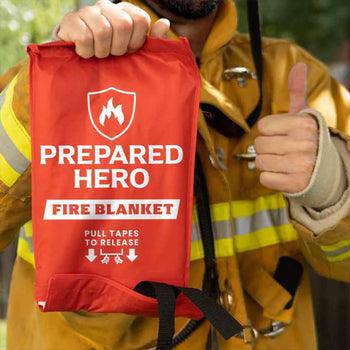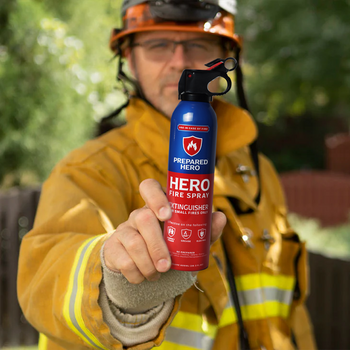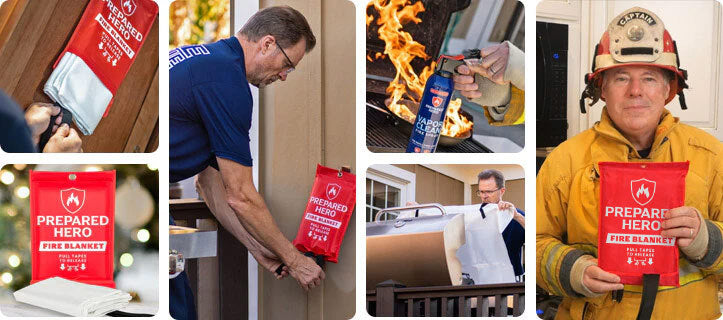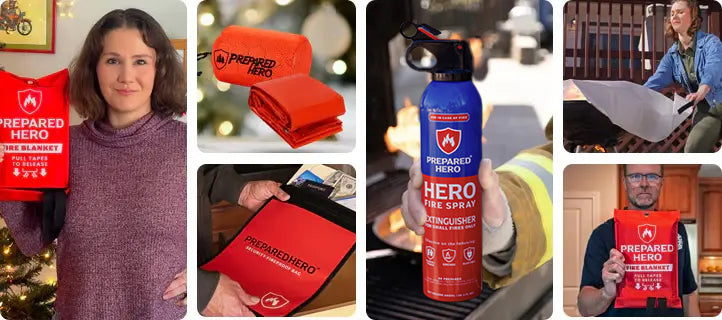Where you put your smoke detectors matters just as much as installing them. Proper placement makes sure they can detect...
Workplace safety is a must, especially with increasing natural disasters, accidents, and health emergencies. Many organizations now rely on emergency action plans (EAPs) for a safer workplace. These plans are more than just paperwork—they provide clear steps for protecting employees and property during emergencies.
In this guide, we’ll explore what emergency action plans are, how they work, and how they can benefit your workplace.
What Is an Emergency Action Plan?

An emergency action plan is a written plan that explains what to do in different types of emergencies. It helps everyone know exactly how to respond during a crisis. Whether it’s a fire, a medical emergency, a chemical spill, or even workplace violence, an EAP lays out the steps people should take to stay safe.
It also covers things like how to evacuate the building, where to meet afterward, who’s in charge of what, and how to contact emergency services. In addition, it includes instructions for using fire blankets, sprays, or extinguishers, handling weather-related disasters, and managing dangerous materials. The OSHA (Occupational Safety and Health Administration) requires this kind of plan under safety regulations for workplaces in the US.
A solid EAP helps cut down on confusion when something serious happens. It also reduces the risk of injury, damage to the building, or loss of life. Everyone at work should know what’s in the plan and be trained on how to follow it. That way, if an emergency ever hits, people can act fast and safely.
Bottom line: an EAP isn’t just a piece of paper. It’s a critical part of keeping a workplace safe, staying compliant with safety laws, and making sure people are ready to respond when it really matters.
Components of an Emergency Action Plan

An emergency action plan helps everyone know what to do when things go wrong. It covers who to call, how to evacuate, and who’s in charge of what. Here are the key parts every EAP should include, according to the OSHA:
1. How to Report an Emergency
Your emergency plan needs to explain exactly how to report a fire or any other emergency. This might mean calling 911, using a work phone to dial a specific number, or pulling a fire alarm. Whatever the method, it has to be clear and easy for everyone to follow. The plan should also include backup options and make sure people with disabilities have a safe way to report problems.
2. How to Evacuate the Building
Everyone should also know the quickest way to get out of the building in an emergency. Your plan needs to show exit routes, emergency exits, and where to meet up outside. These paths should be clearly marked and not blocked. You should also explain who has the authority to call for an evacuation and what steps workers should take before leaving. These include shutting down machines and turning off lights. Floor maps with marked exits help, too.
3. Who Stays Behind to Shut Things Down
Certain employees might need to stay behind for a moment to turn off equipment or shut down systems that could make the situation worse. This should only be done by trained staff. The emergency action plan should also state who is responsible for what. No one should be guessing during an emergency.
4. How to Make Sure Everyone Got Out
Someone needs to account for everyone once the building is evacuated. This could be done through a roll call, a headcount, or checking names off a list at the meeting point. Some companies assign evacuation wardens who make sure no one is left behind and double-check rooms, restrooms, and common areas before leaving themselves.
5. Who Helps with First Aid or Rescue
If your team has staff trained in first aid or basic rescue, the plan should say who they are and what they should do. Most small businesses rely on emergency responders like fire departments or paramedics, but having a few trained people on site can make a big difference until help comes.
6. Who to Contact with Questions
Finally, your plan should include the names or job titles of people employees can go to with questions. These might be safety managers, team leads, or HR staff. Add their contact info so everyone knows who to reach out to before or during an emergency.
How Does an Emergency Action Plan Benefit Your Workplace?

An emergency action plan keeps your workplace safe in many ways. Here’s how an emergency action plan benefits your workplace:
1. Keeps Employees Safe
The number one reason to have an EAP is to protect your people. When something unexpected happens (like a fire, flood, or medical emergency), things can get chaotic fast. A clear plan helps everyone stay calm, follow the right steps, and get to safety without confusion. It’s not just about employees, either. If you have clients, customers, or guests on site, the plan should help keep them safe, too.
2. Helps You Stay Compliant
You’re probably required to have an emergency plan by law, depending on where your business is. For example, the OSHA in the US has clear rules about what workplaces need to include. Having a proper EAP helps you meet these rules and avoid fines or legal trouble. It also shows that your company takes safety seriously.
3. Speeds Up Emergency Response
Every second counts in an emergency. An EAP tells people exactly what to do, where to go, and who’s in charge. That means less panic and faster action. The sooner you respond, the better your chances of minimizing damage, preventing injuries, and saving lives.
However, not every emergency looks the same. Some might be weather-related, while others involve equipment failure, chemical spills, or workplace violence. A solid EAP doesn’t just focus on one type of emergency. It prepares your team for a wide range of situations. That kind of flexibility is key to staying safe, no matter what comes your way.
4. Shows You Care About Your Team
A company with a solid emergency action plan shows employees that their safety matters. That kind of care builds trust and boosts morale. People feel more confident coming to work when they know the company is ready for anything.
5. Saves You Money
Disasters can be expensive. Between replacing equipment, cleaning up damage, and dealing with lost productivity, the costs can add up fast. An EAP helps lower those costs by keeping the emergency under control and getting operations back on track quicker. It can also help with insurance claims and coverage.
6. Keeps Everyone in the Loop
Communication during an emergency is key. An EAP sets up clear ways to share information, whether that’s between employees, management, or outside responders. It also helps make sure everyone knows what’s happening and what they need to do—no guessing, no delays.
7. Builds a Better Reputation
How your company handles emergencies says a lot. If you’re organized, prepared, and focused on safety, your employees, clients, and the public will notice. That kind of reputation is good for business and can build long-term trust.
8. Helps Emergency Services Help You
Emergency services like the fire department or paramedics need clear information fast. A solid emergency action plan outlines how to contact them, where to meet, and what they need to know about your site. It makes their job easier and helps them respond faster when every second matters.
How to Implement an Emergency Action Plan
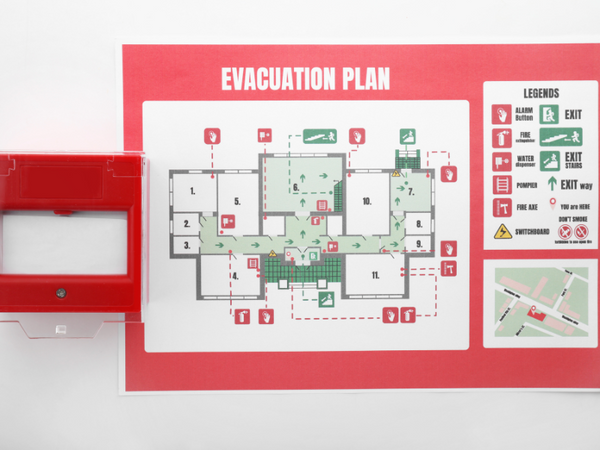
Creating a solid emergency action plan (EAP) isn’t just a safety box to check. It’s a smart way to protect your team and keep operations running when things go wrong. Here’s how to implement an emergency action plan:
1. Start Simple (or Complex, If Needed)
Not every workplace needs a complicated plan. If you run a small office or retail space, a basic emergency action plan will do. But if your workplace handles hazardous materials or needs people to stay behind during emergencies, you’ll need something more detailed. Make sure your EAP matches your actual risks.
2. Build a Site-Specific Plan
Every workplace is different. Your plan should reflect that. Include evacuation procedures, emergency contacts, alarm systems, and how to report an emergency. Keep it relevant to your space, your people, and your operations.
3. Involve Your Team Early
Don’t create the plan alone. Ask employees to share concerns, physical hazards they’ve noticed, and ideas for worst-case scenarios. Getting input from the team makes your plan stronger. Plus, they’re more likely to remember your EAP if they helped build it.
4. Pick a Coordinator
Choose someone who will take charge during emergencies. This person should be responsible for making decisions, contacting emergency services, and guiding people through the process. Make sure everyone knows who this is.
5. Train Everyone
Once the plan is ready, train everyone. Go over what they should do, how to evacuate, what the alarms mean, and how to shut down equipment safely. If anything changes, review the plan again. Annual refreshers and drills help keep it fresh in people’s minds.
Make sure everyone can find the EAP. Post it where people can see it, or hand out copies. If you’ve got 10 or fewer employees, you can go over the plan verbally. However, you have to make sure everyone understands it.
6. Hold Drills
Schedule emergency drills. They can be announced or unannounced. The goal is to see how well people follow the plan. Afterward, meet up with your team to go over what worked and what needs improvement. Update the plan and retrain if needed.
7. Coordinate with First Responders
Work with your local fire department, police, or hazardous materials teams. Let them know what you expect from them, and make sure your plan matches their protocols. That way, they’re not in the dark when they show up.
8. Review and Update Regularly
Things change, and your emergency action should change with them. Check for outdated contacts, new hazards, or changes in procedures. Keep it current so it’s ready when you need it.
Conclusion
Having a solid Emergency Action Plan (EAP) is more than just ticking off a legal requirement. It's about protecting your team and ensuring a quick, coordinated response during emergencies. Whether it’s a fire, medical situation, or natural disaster, an EAP provides clear steps for everyone to follow. By preparing your workplace in advance, you’re saving time, reducing risks, and showing your team and clients you genuinely care about them.
Do you want reliable, easy-to-use, and affordable tools to put out small fires before they spread? Check out Prepared Hero’s fire prevention tools here, and get up to 51% off on certain items. Stay prepared, hero!


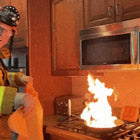 Fire
Fire Safety
Safety Survival
Survival Protection
Protection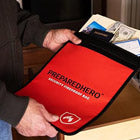 New
New
 Fire
Fire Safety
Safety Survival
Survival Protection
Protection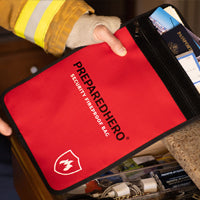 New
New
